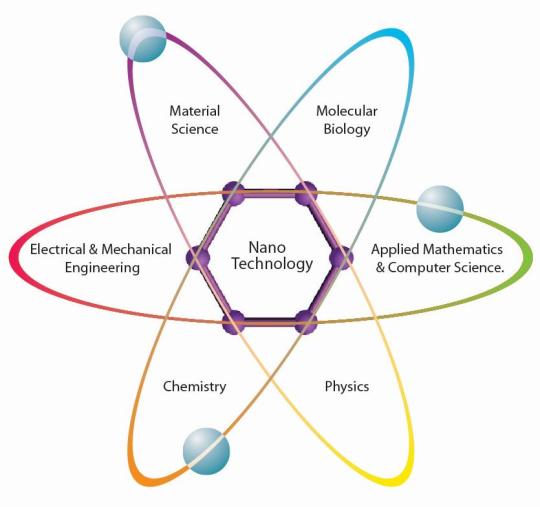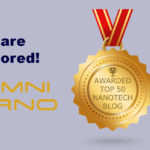The challenge of defining nanotechnology to a broad audience

We are often asked to define nanotechnology by people who perhaps took a science class 20+ years ago, and this has proven to be a challenging task. One frequent problem is that people may have heard the term ‘nano’ but never understood its true meaning.
Omni Nano has created a practical approach to define nanotechnology to a broad audience who may not be very familiar with the term “nano”. We approach this challenge in the 7 steps outlined below. We’d like to share it with the STEM education community and appreciate your feedback.
- Very broad definition: Nanotechnology is a new and rapidly growing field of “STEM” (Science, Technology, Engineering, and Mathematics).
- Broad definition: Nanotechnology is a highly interdisciplinary study, embracing concepts from chemistry, physics, molecular biology, materials science, electrical and mechanical engineering, applied mathematics, and computer science. Nanotechnology lies at the intersection of these scientific and engineering disciplines.
- Simplified definition: Nanotechnology encompasses the manipulation of very small materials, called nanomaterials. These materials are completely invisible to the human eye and their dimensions are measured in nanometers. A nanometer is one billionth of a meter (one billionth of about 39.37 inches), and the prefix “nano” means “one billionth”, or 10-9.
- Technical definition: Nanotechnology is the understanding and control of matter at dimensions between approximately 1 and 100 nanometers (nm).
- What is different at the Nanoscale?: Materials whose dimensions are confined at the nanoscale display novel optical, electrical, mechanical, and chemical properties in comparison to the same material at the larger, bulk scale. These nanomaterials, which enable nanotechnology, are expected to deliver products of superior mechanical strength, higher computational speed, and increased efficiency.
- Explained using existing sciences: Although a new field of science, nanotechnology can be understood using existing laws, theories, and principles of traditional sciences such as physics, chemistry, and molecular biology.
- Where is nanotechnology going to be used?: Nanotechnology is expected to find novel solutions to long-standing, real-world problems and to have a large impact on the global economy. Nanotechnology has widespread applications in a variety of fields ranging from communications, medicine, computation, energy production and storage, environmental conservation, and warfare. The next generation of many consumer products, ranging from computer chips to batteries or even cosmetics, is envisioned to utilize nanotechnology. Such products and related services are expected to be at the base of a new, global, multitrillion-dollar economy that soon will affect millions of jobs, both directly and indirectly.
We find that within 5 minutes, someone who has a basic science background is able to grasp a good understanding of nanotechnology.







